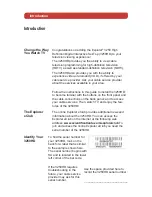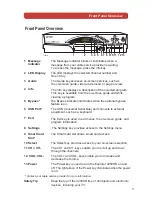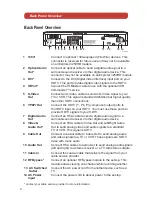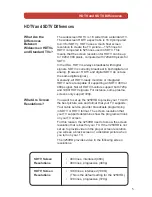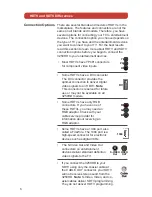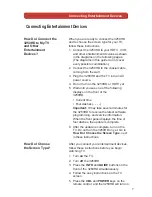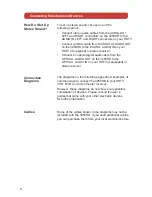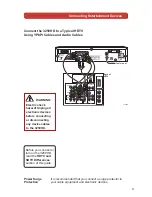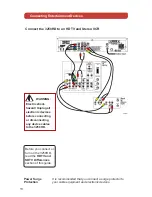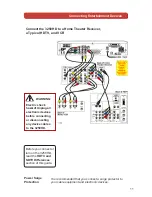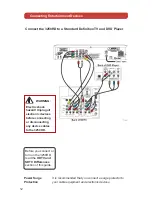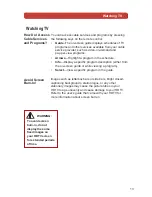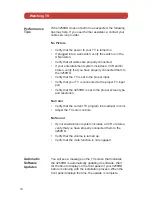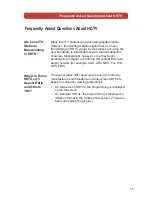
5
HDTV and SDTV Differences
HDTV and SDTV Differences
What Are the
Differences
Between
Widescreen HDTVs
and Standard TVs?
The widescreen HDTV is 1/3 wider than a standard TV.
The widescreen HDTV aspect ratio is 16:9 (compared
to 4:3 for SDTV). HDTV uses a much finer screen
resolution to create the TV picture— 1125 lines for
HDTV compared to 525 lines used in SDTV. This
means that the screen resolution for HDTV can be up
to 1920x1080 pixels, compared with 720x480 pixels for
SDTV.
In the USA, HDTV is always broadcast with digital
signals. SDTV is currently broadcast in both digital and
analog. (However, HDTV and digital SDTV do
not
use
the same digital signal.)
Generally, all HDTV-ready monitors or integrated
HDTV sets are capable of supporting an SDTV 480i or
480p signal. Not all HDTV monitors support both 720p
and 1080i HDTV signals. For instance, some plasma
screens only support 720p.
What Are Screen
Resolutions?
For this reason, the 3250HD needs to know the screen
resolution that is best for your TV. If the 3250HD is not
set up to provide video in the proper screen resolution,
you will see a black screen or a distorted picture when
you turn on your TV.
The 3250HD provides video in the following screen
resolutions.
You want to set up the 3250HD to provide your TV with
the best picture size and format that your TV supports.
Your cable service provider broadcasts programming
in SDTV or HDTV format. The screen resolution that
your TV supports determines how the program will look
on your TV screen.
SDTV Screen
Resolutions
HDTV Screen
Resolutions
• 480 lines, interlaced (480i)
• 480 lines, progressive (480p)
• 1080 lines, interlaced (1080i)
(This is the default setting for the 3250HD.)
• 720 lines, progressive (720p)
Содержание Explorer 3250HD
Страница 1: ...1 Explorer 3250HD HDTV High Definition Television User s Guide...
Страница 16: ...752313 Rev D...


